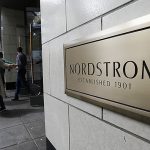Big 5 Sporting Goods Corp. believes its focus on providing value, particularly around exclusive, special make-up product, is paying off. Last week, the West-Coast chain reported sales rose 8.2% in its fourth quarter, to $237.6 million. Comps inched up 0.1% and merchandise margins increased 88 basis points.
The larger top-line gain reflects a 14-week period in the latest period versus 13 weeks a year ago. Comps used comparable 14-week periods with the small gain reflecting unfavorable winter weather comparisons in many of its markets.
EPS is expected to range from 28 cents to 30 cents, which is within the company's previously issued guidance range and compares with 17 cents a year ago. Updated Q409 guidance includes a nonrecurring pre-tax charge of $900,000, or 3 cents per share, for the establishment of a reserve for a previously disclosed lawsuit, offset by proceeds received from the settlement of a class action lawsuit relating to credit card fees.
For the 2009 full year, EPS is expected to range between $1 and $1.02, more than a 50% increase over 2008's 64 cents.
At ICR XChange, Steve Miller, chairman and CEO, said the company is particularly benefiting from exclusive product, which is largely special makeup items. These exclusive products account for nearly half of its mix and yield margins roughly 300 to 500 basis points higher than branded, in-line product, which accounts for the other half. Miller said Big 5's buying team that average 22 years with the company are instrumental in securing these special-makeup deals. Special makeup products and opportunistic buys particularly play a huge role in its footwear assortments, which account for a third of sales.
Another key factor to Big 5's success has been aggressive advertising in circulars. Over 13 million circulars are distributed each week – with some weeks seeing two circulars – and over 45% of its sales come from products shown in its circulars. But Miller also noted that most of the featured product in its circulars delivers solid margins.
“Our ad product margins are not too dissimilar to the margins we achieve for product not on ad,” said Miller. “And that's really a function of how do we utilize our unique product mix – branded, exclusive, and opportunistic buys, private label – to drive our advertising.”
Miller also reiterated that the company plans to open “substantially more stores this year” than the three opened in 2009 although real estate plans haven't been finalized. It had on average opened 18 stores a year for the five-year period ending 2008.









